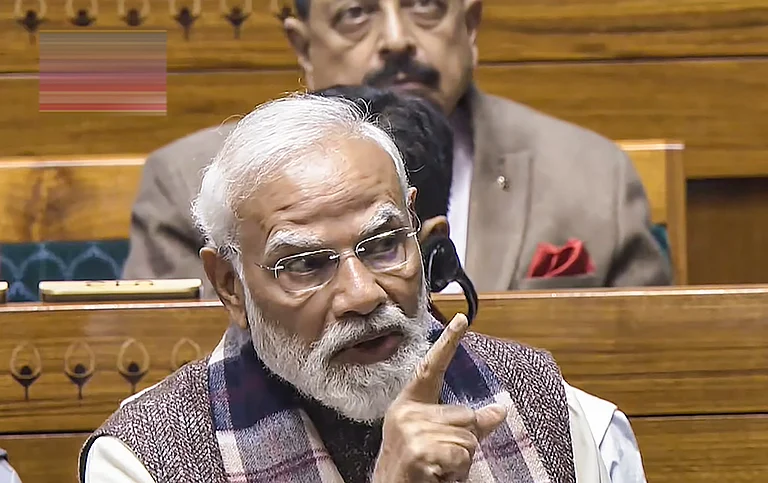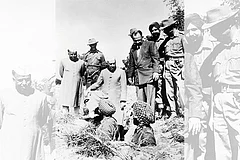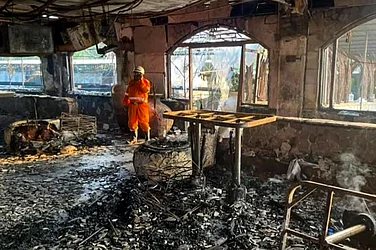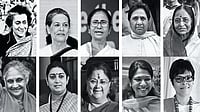The only time Mahatma Gandhi and Savarkar met was when in 1910 they clashed at a meeting in London over the true meaning of the Bhagavad Gita. Whereas Savarkar treated the Mahabharat literally as a war in which the Hindu realised himself “in violence” (ref. Vinayak Chaturvedi, the foremost Savarkar biographer), the Mahatma took the epic metaphorically, particularly the Bhagavad Gita, as a poetic metaphor for the struggle between good and evil.
While they never met again, Gandhi steadfastly refused to answer the bile in Savarkar’s repeated excoriation of Gandhi’s doctrine of non-violence and Satyagraha. In the political field, after Savarkar became the President of the Hindu Mahasabha in 1938, Savarkar’s repeated humiliation on the political battlefield at Gandhi ji’s hands was total. India rejected Savarkar’s Hindutva till his dying breath.
But the current saffron forces cannot afford to continue the vicious attacks on him as Gandhi ji remains a revered figure in the Indian consciousness. So, they turn their guns on Gandhi ji’s handpicked successor, Jawaharlal Nehru, handpicked precisely because Gandhi saw in Nehru an equally impassioned champion of Hindu-Muslim unity, Gandhi ji’s highest goal.
Readers are invited to please note that although Gandhi ji was a most devoted Ram bhakt, he never even mentioned the Ram Janmabhoomi or the need to “liberate” it from a 500-year-old mosque. Indeed, Gandhi went further in ordering Sikh and Hindu refugees at the height of the communal madness in August-September 1947 to immediately return to the minority community all mosques, dargahs and Muslim shrines captured by our refugees as places of dwelling. He sought religious harmony not in avenging himself on “one thousand years of slavery” but in recognising that all religious paths lead to the same goal of spiritual salvation.
After his assassination by a saffron fanatic who sought and obtained Savarkar’s blessings, Gandhi’s place at the moral head of the nation was taken by his chosen successor, Nehru. It, therefore, fell to Nehru to combat the poisonous ideology spread by the Hindu Mahasabha and the Rashtriya Swayamsevak Sangh (RSS), to which political expression was given by the founding of the Bharatiya Jana Sangh on October 16, 1951.
For six-and-a-half decades from the moment Gandhi ji fell to a saffron bullet till 2014, Nehru’s “Idea of India” as a “unity in diversity” based on recognising our country’s civilisational genius in “absorbing, assimilating and synthesising” all that was good in thoughts that came from outside, but refusing to be “blown off our feet” by any “outside winds”, in Gandhi’s immortal phrase, prevailed even during the successive reigns of Atal Bihari Vajpayee.
Modi’s emergence has given rise to an alternative “Idea of India” that is, on every important parameter of our nationhood, incompatible with the India that Nehru and his colleagues built.
Narendra Modi’s emergence, however, has given rise to an alternative “Idea of India” that is, on every important parameter of our nationhood, incompatible with the India that Nehru and his colleagues built, an Idea of India that was carried through half a century by Nehru and his successors. So complete was the conquest of the Indian mind by this Nehruvian Idea of India that, at one stage, the BJP, successor to the Jana Sangh, was reduced to just two seats in the Lok Sabha.
Indeed, during the 90 years from the formulation of Hindutva in 1923 till the rise of Modi, the saffron crowd nurtured their hatred of the towering personalities who had thwarted them. Therefore, once they captured the seat of political power, all the vengeance that they had stored has been finding expression, focused on Nehru.
Where does Nehru’s vision differ from Modi’s? I suggest four parameters on which the question may be answered— democracy, secularism, socialism, and non-alignment.
Nehru was the quintessential democrat. Notwithstanding the increasing majorities by which he was returned in the three successive elections he won in 1952, 1957 and 1962, he was not only engaged in drafting the Objectives Resolution that was fleshed out by Ambedkar into the Constitution of India, Nehru was also instrumental in ensuring that the Constitutional institutions—specifically, Parliament and the Supreme Court; the Election Commission and the investigative agencies—were kept strictly independent of the executive but also respected for the role the Constitution expected them to play in keeping the Executive on the straight and narrow path of constitutionalism.
Meticulous about attending Parliament despite his other governance chores, and listening silently to parliamentary attacks on him, Nehru was a model of parliamentary decorum, ensuring that the moral values written into the warp and woof of the Constitutional order were respected and upheld.
Nehru ensured the Constitutional institutions were kept independent of the executive. A return to the first principles of Nehruvianism is essential to move away from the distortions of the present.
One example should suffice. When the first round of Chinese attacks occurred in October 1962, 36-year-old Vajpayee, representing just four Jana Sangh MPs, approached Nehru for a debate on China’s aggression. Nehru immediately agreed to recall Parliament to debate just this issue. More than 180 Lok Sabha members and close to a hundred speakers in the Rajya Sabha participated in the debate. The Opposition and even Congress dissidents were heard out without disruption, however sharply they trained their guns on the Treasury benches and the Prime Minister personally. Nehru then patiently responded.
The media is bullied into submission. The investigative agencies are unleashed on dissidents and reined in on government supporters. For all the lip service paid to democracy and the Constitution, democratic values are undermined with studied contempt.
When it comes to secularism, the very word is derided. The Ambedkar-Nehru endeavour to keep the State insulated from religion—all religions—which is what makes secularism an integral part of the ‘basic structure’ of the Constitution (as adumbrated by large benches of an assertive judiciary that saw its fundamental task as safeguarding the letter and spirit of the Constitution) has now collapsed with the royal ‘sengol’ placed alongside the Hon’ble Speaker’s chair, symbolising Modi’s interpretation of “secularism” and the Prime Minister combining in himself (or should that be spelt ‘Himself’?) the roles of both PM and Chief Hindu Priest.
The establishment of a ‘Hindu Rashtra’, which is the avowed objective of the current regime, is incompatible with the humane, compassionate secularism of our Constitution that informed the Gandhian-Nehruvian vision as embodied in Ambedkar’s conception of a secular Bharat.
Hinduism is a great religion; Hindutva is a single religion-based, sectarian, and discriminatory political agenda. Where Nehruvian secularism refused to imitate Islamic Pakistan by making India a Hindu republic, the explicit larger goal of those who have ruled this land for the past decade is to establish their majoritarian goal of making a ‘Hindu Bharat’ a clone of Muslim Pakistan. Their war cry is appeasement (tushtikaran), which is a word used to pacify a war-like enemy, as Chamberlain did with Hitler, by making concessions to the war-mongering Nazi enemy. Are the Muslims of India the enemies of Bharat for them to be “appeased”? Is compassion towards a religious minority to be equated with appeasing an enemy to entice him away from further depredations?
Socialism has, of course, been thrown overboard although Nehru conceived India not as a socialist state but “as a socialistic pattern of society”, an indigenous, not an imported, concept. Of course, the process of reforms was begun in 1991 as a Congress policy but it was clarified that we were only building on past successes and now adapting policy to the imperatives of the very successes that Nehruvian socialism had engendered.
All that is in the distant past as economic growth under Modi derives from hugely widening disparities and favoured industrialists being encouraged to set up their own chaebols in return for large purchases of electoral bonds to favour the ruling party. Indian capitalism now equals duopolies and oligopolies, and never-before-seen income and wealth disparities that give political power to favoured captains of industry, whatever the income distribution injustices of such policy.
Last, non-alignment has been buried. Peace-loving, fiercely independent India under Nehru, especially in his hey-day of the Fifties, was truly the Vishwaguru to whom the world turned for solutions to war in Korea, Indochina, Suez, Palestine, Cyprus, and the Congo, apart from leading the historic processes of decolonisation which transformed the world order. Non-aligned India under Nehru was the go-to country for warring powers. Now, whatever the pretensions of the ruling elite, we are reduced to playing a trapeze artiste in a global circus.
A return to the first principles of Nehruvianism is essential to move away from the distortions of the present.
(Views expressed are personal)
(This appeared in the print as 'Nehru: The Quintessential Democrat')
MORE FROM THIS ISSUE
Mani Shankar Aiyar is former minister and senior Congress leader



























